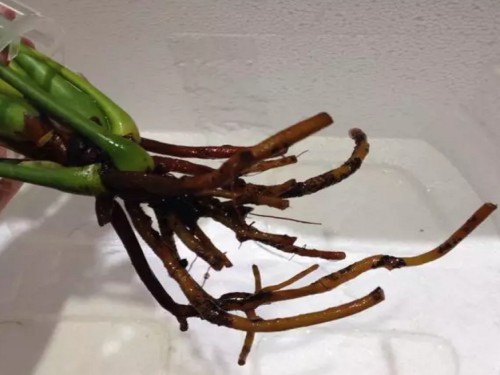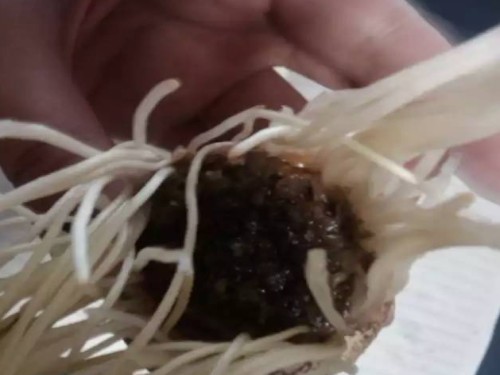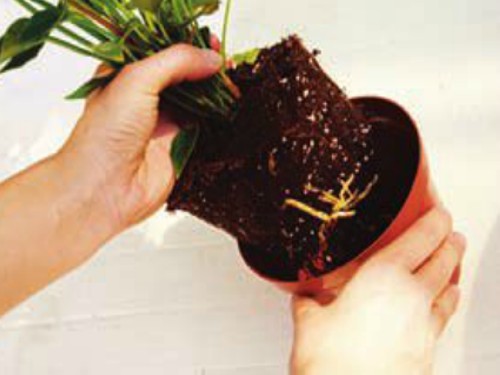What about the rotten roots of water-cultivated red palms?
The key to Anthurium hydroponics is to ensure the healthy growth of the roots. Anthurium is an aerial root and needs enough oxygen. However, the oxygen in the water is far less than that in the soil. Many reasons will cause the roots to rot. The following small series introduces the methods to prevent the rotten roots of hydroponics Anthurium!
The growth of hydroponic plants is often not as strong as that of soil culture, the amount of water in the container is not well controlled, the water is too full, the water is not changed frequently, the oxygen content in the water is low; the water is too little, the root of the plant is short of water, and the growth is slow. So the key to hydroponics is water! The following are measures to prevent root rot in hydroponics:

1. Environmental control
Hydroponic Anthurium is basically completely exposed to the environment, and it is particularly important to control its surrounding environment. The plants should be placed in a place with scattered light; the temperature should be controlled, not higher than 28℃ in summer and not lower than 14℃ in winter; the ambient humidity should be appropriately increased, and the indoor relative humidity should reach more than 80%, and the humidity can be increased by spraying water.
Check the root growth of Anthurium andraeanum frequently when changing water. If there is rotten root phenomenon, cut it off immediately. If the stem is also rotten, cut it off. Soak the roots of the treated plants in 1000 times potassium permanganate solution for disinfection for 30 minutes, change clean water for culture again, pay attention not to add nutrient solution in water, change water once every 1~2 days, and maintain normally after new roots grow out.
2. Aerobic measures
Anoxia in water is the main cause of root rot, and the dissolved oxygen in water should be increased in due course. The best way to increase oxygen in water is to make it flow. You can hold the plant in one hand, shake the vase in the other hand, shake it for 1 minute to increase the dissolved oxygen in the water by 30%; you can also drop a little hydrogen peroxide into the water; or take out the anthurium first, and use the oxygenating pump for fish farming to supply water "oxygen."
3. Regularly change water
Regular water change can remove mucus secreted by plant roots, residual nutrients, and algae breeding in time to ensure clean water quality. The water change interval varies according to the season. Generally, the water can be changed once every 5-7 days in spring and autumn, once every 7-10 days in winter, and once every 2-3 days in summer when the temperature is high. During the water change interval, add water appropriately according to the amount of water in the container.
Note that when changing water, don't add too much, so that at least 1/2 of the roots of Anthurium should be exposed to the water surface, so that the exposed part can absorb enough oxygen.
Xiao Bian suggested:
The phenomenon of rotten roots in hydroponics is mostly due to insufficient water change or insufficient water quality. Especially in summer, when the weather is sultry, it is best to change the water once a week. When changing the water, all the original water should be poured out, the basin should be cleaned, and then the rotten roots of the plants should be cut off, and the roots should be washed and put into the basin.
The water in the basin should not be put too much, one-third of the basin can be used. It is recommended that you cut off the rotten roots first, and then change the water frequently. If you maintain it properly, you will grow new roots.
Time: 2019-06-01 Click:
- Prev

What about the rotten roots of hydroponic plants?
People who like to raise green plants know that hydroponic plants are generally easier to grow than soil-grown plants, but hydroponic plants are also easy to rot if they are not well preserved. The so-called rotten root means that the root of the plant turns yellow, black and soft, and when you gently pull the rhizosphere with your hand, the epidermis is very easy to tear off, leaving only the lignified part.
- Next

How to raise Anthurium andraeanum in hydroponics? Methods of hydroponic culture of Anthurium andraeanum
In the hydroponic culture of Anthurium andraeanum, half of the roots should be exposed to the air, so that the roots can breathe in the air, otherwise, it will easily lead to rotting roots. The roots of hydroponic plants grow when exposed to light, and the plant cells have photosynthesis after exposure to light, and so are the roots. It's normal when it's green. As long as it's not in direct sunlight.
Related
- Fuxing push coffee new agricultural production and marketing class: lack of small-scale processing plants
- Jujube rice field leisure farm deep ploughing Yilan for five years to create a space for organic food and play
- Nongyu Farm-A trial of organic papaya for brave women with advanced technology
- Four points for attention in the prevention and control of diseases and insect pests of edible fungi
- How to add nutrient solution to Edible Fungi
- Is there any good way to control edible fungus mites?
- Open Inoculation Technology of Edible Fungi
- Is there any clever way to use fertilizer for edible fungus in winter?
- What agents are used to kill the pathogens of edible fungi in the mushroom shed?
- Rapid drying of Edible Fungi

